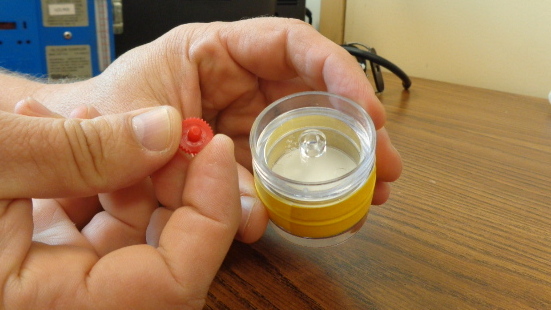Every chemical laboratory defines the smallest concentration of an analyte that they can measure with some confidence. Usually, the lowest detectable concentration is related to the method sensitivity and reproducibility and is an important Quality Control parameter. Different laboratories use slightly different definitions of reporting limits, and the main differences are discussed below:
EPA uses the term Method Detection Limit (MDL). MDL is the lowest concentration of an analyte that can be detected at a concentration just above the background noise. For example, a laboratory established that the method detection limit for Lead is 1mg/L (MDL=1mg/L). They tested a sample of industrial water and the instrument shows Lead concentration of 0.4mg/L. The lab would report to a client that the “Lead is NOT DETECTED, and its concentration is <1mg/L”
NIOSH uses the term Limit of Detection (LOD) which is similar to MDL but deals with the analyte amount detected on a sampling device. For example, the LOD=0.5 µg/filter means that the lowest amount that the lab can detect is 0.5 µg/filter
NIOSH also uses Limit of Quantification (LOQ) which is 3 times LOD. LOQ is the lowest amount of the analyte that can be measured with a decent accuracy of about ±30%
AIHA LAP uses the term Reporting Limit (RL) which is LOD times a safety factor between 2 and 10.
If you like my interpretation of the ISO 17025 standard I can help you to navigate through other ISO 17025 requirements and prepare your laboratory for accreditation or certification. I can offer my 25 years of experience as a Laboratory Manager, Quality Manager for Canadian ISO 17025 accredited laboratories, and 5 years of experience as a laboratory Site Assessor / Auditor for one of the largest accreditation organizations. I offer online and in-person consulting. If you think that you can use my expertise, please contact me at your convenience.

2 comments
For hazardous waste determination purposes, how do you determine if you are below the RCRA TCLP limits if the lab’s Reporting Limit (RL) is greater than the RCRA limit. For example, Arsenic the RCRA TCLP limit is 5 mg/L. The lab’s RL is 10.0 they give the result as <10.0 mg/L per analytical method EPA6010D. Or selenium, the TCLP limit is 1.0 mg/L, the lab's RL is 5.00 mg/L, the lab gives the analytical result as <5.00 mg/L.
In water analysis or waste analysis the lab usually reports MDL rather than the RL. Regardless, if the lab reported you MDL higher than the regulated limit, you cannot use the results for your assessment. Talk to the lab and ask if they can report MDL instead of RL. MDL is usually 2-10 times lower than the RL. If they cannot do anything for you, you will need to find another lab that can.